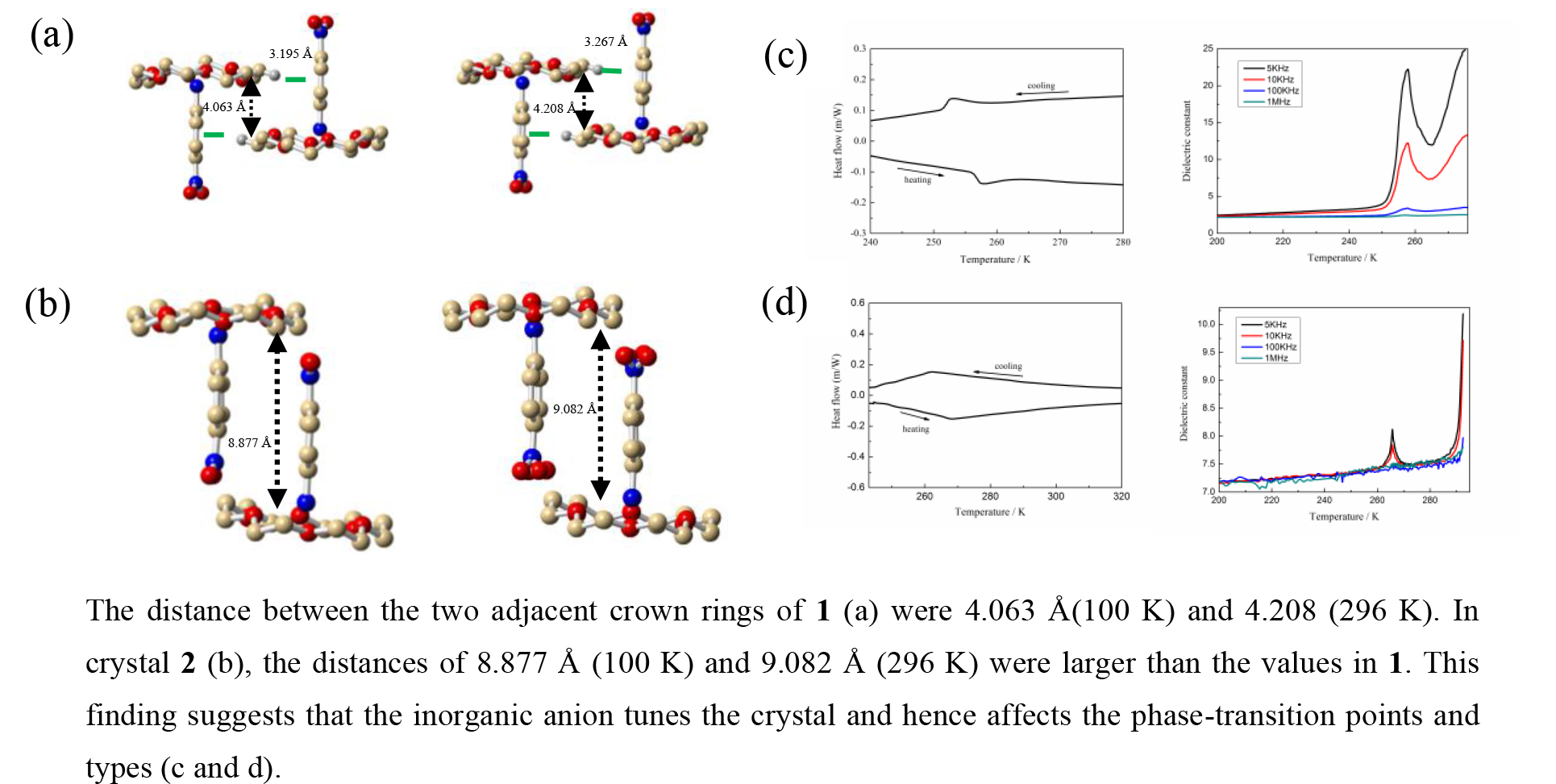Two novel inorganic–organic hybrid supramolecular assemblies, namely, (4-HNA)(18-crown-6)(HSO4) (1) and (4-HNA)2(18-crown-6)2(PF6)2(CH3OH) (2) (4-HNA = 4-nitroanilinium), were synthesized and characterized by infrared spectroscopy, single X-ray diffraction, differential scanning calorimetry (DSC), and temperature-dependent dielectric measurements. The two compounds underwent reversible phase transitions at about 255 K and 265 K, respectively. These phase transitions were revealed and confirmed by the thermal anomalies in DSC measurements and abrupt dielectric anomalies during heating. The phase transition may have originated from the [(4-HNA)(18-crown-6)]+ supramolecular cation. The inorganic anions tuned the crystal packings and thus influenced the phase-transition points and types. The variable-temperature X-ray diffraction data for crystal 1 revealed the occurrence of a phase transition in the high-temperature phase with the space group of P21/c and in the low-temperature phase with the space group of P21/n. Crystal 2 exhibited the same space group P21/c at different temperatures. The results indicated that crystals 1 and 2 both underwent an iso-structural phase transition.

